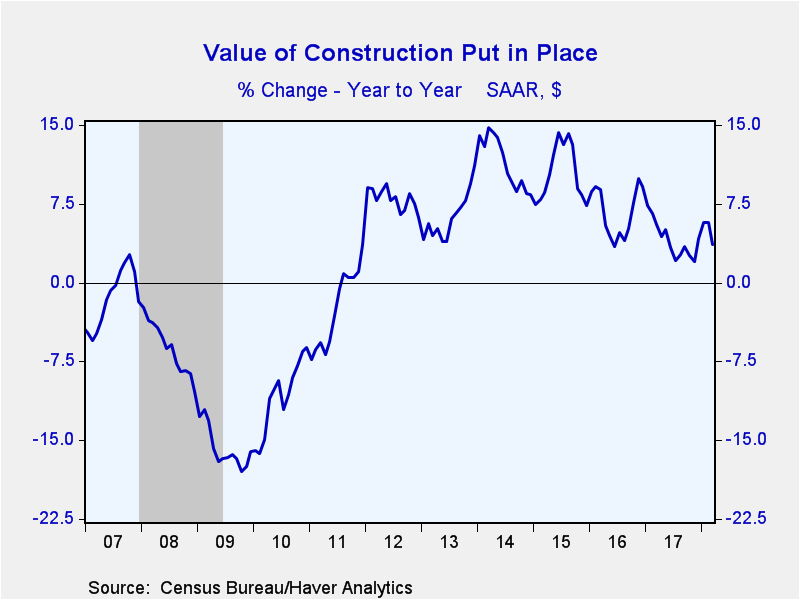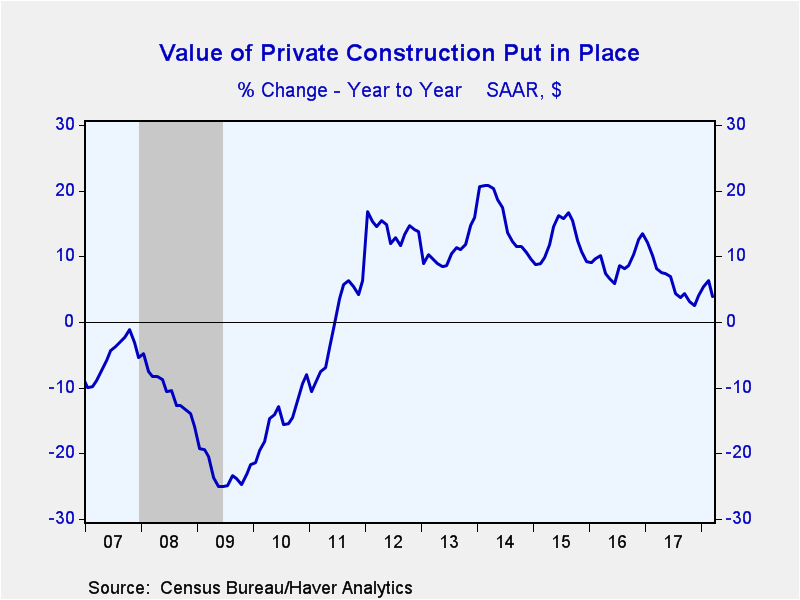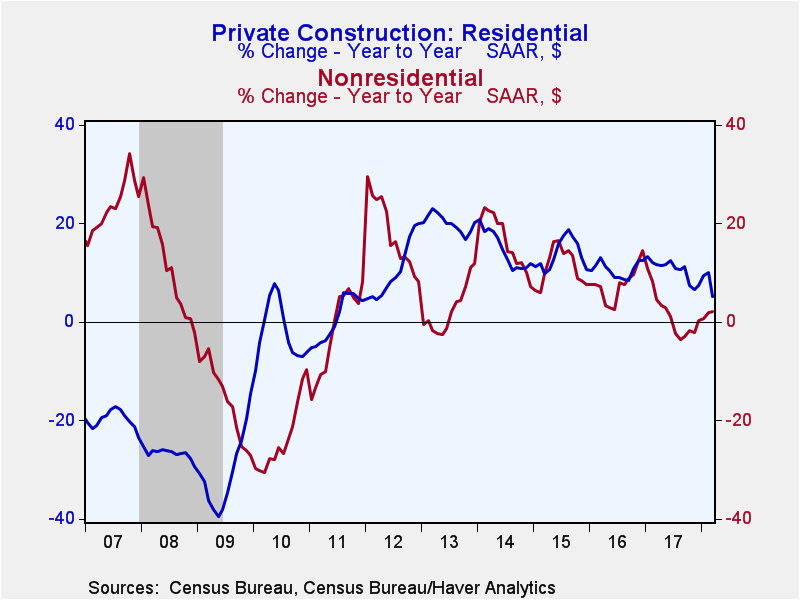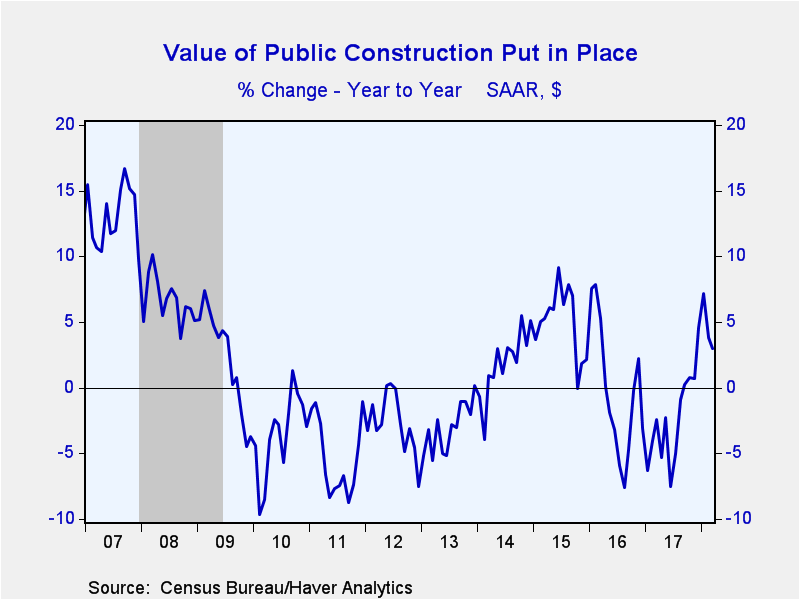 Global| May 01 2018
Global| May 01 2018TT
by:Sandy Batten
|in:Economy in Brief
Summary
The value of construction put-in-place improved 0.1% (3.7% y/y) during February following unrevised stability in January. A 0.4% rise in building activity had been expected in the Action Economics Forecast Survey. Private sector [...]
The value of construction put-in-place improved 0.1% (3.7% y/y) during February following unrevised stability in January. A 0.4% rise in building activity had been expected in the Action Economics Forecast Survey.
Private sector building activity increased 0.7% (3.8% y/y) after a 0.7% decline in January. Nonresidential construction improved 1.5% (1.3% y/y) and reversed January's shortfall. Office construction strengthened 6.5 (3.0% y/y) and commercial construction rose 1.2% (7.4% y/y). Transportation building activity declined 1.3% (+34.4% y/y). Residential building nudged 0.1% higher (6.1% y/y) for a second straight month. Single-family housing activity rose 0.9% (9.5% y/y) for a second straight month. Multi-family construction increased 1.2% (-0.0% y/y) and reversed a 1.7% decline. The value of improvements declined 1.5% (+3.8% y/y), down for the second straight month.
The value of public sector building activity declined 2.1% (+3.7% y/y) and reversed the prior month's increase. Highway and street construction, the largest component of public sector construction, eased 0.2% (-3.1% y/y). Educational building slipped 0.5% (+4.2% y/y) and office construction fell 0.6% (+20.6% y/y). Water supply construction rose 1.3% (5.9% y/y).
The construction spending figures, some of which date back to 1946, are in Haver's USECON database and the expectations reading can be found in the AS1REPNA database.
| Construction Put in Place (SA, %) | Mar | Feb | Jan | Mar Y/Y | 2017 | 2016 | 2015 |
|---|---|---|---|---|---|---|---|
| Total | 1.6 | 0.1 | -0.0 | 3.7 | 4.1 | 6.5 | 10.7 |
| Private | 2.0 | 0.7 | -0.7 | 3.8 | 6.2 | 9.2 | 12.9 |
| Residential | 1.6 | 0.1 | 0.1 | 6.1 | 10.9 | 10.5 | 14.2 |
| Nonresidential | 2.6 | 1.5 | -1.7 | 1.3 | 1.1 | 7.7 | 11.5 |
| Public | 0.4 | -2.1 | 2.3 | 3.7 | -2.5 | -1.2 | 5.1 |
Sandy Batten
AuthorMore in Author Profile »Sandy Batten has more than 30 years of experience analyzing industrial economies and financial markets and a wide range of experience across the financial services sector, government, and academia. Before joining Haver Analytics, Sandy was a Vice President and Senior Economist at Citibank; Senior Credit Market Analyst at CDC Investment Management, Managing Director at Bear Stearns, and Executive Director at JPMorgan. In 2008, Sandy was named the most accurate US forecaster by the National Association for Business Economics. He is a member of the New York Forecasters Club, NABE, and the American Economic Association. Prior to his time in the financial services sector, Sandy was a Research Officer at the Federal Reserve Bank of St. Louis, Senior Staff Economist on the President’s Council of Economic Advisors, Deputy Assistant Secretary for Economic Policy at the US Treasury, and Economist at the International Monetary Fund. Sandy has taught economics at St. Louis University, Denison University, and Muskingun College. He has published numerous peer-reviewed articles in a wide range of academic publications. He has a B.A. in economics from the University of Richmond and a M.A. and Ph.D. in economics from The Ohio State University.










